We’re All That
Raja Feather Kelly and the Imprint of Pop
She’s All That charts a young girl’s journey from this to that. In the 1999 makeover movie, Rachel Leigh Cook plays Laney Boggs, a Cinderella/Eliza Doolittle update in which a glasses-clad androgyne nobody learns how to dress “like a woman.” In the film’s climax, Laney descends an indiscriminate suburban staircase. The camera begins on her hot new heels and ascends her thigh, a full body tilt revealing the new red dress-wearing hyper-femme Laney of our collective dreams. Hoodie is now spaghetti strap. Transformation complete. “This” is now “all that.”
In The Feath3r Theory’s version of the scene, Aaron Moses Robin plays every role in full body yellow spandex. “May I present the new, not improved, but different, Laney Boggs!” he says as Anna Paquin, Laney’s friend and makeover artist. He then mumbles a few notes from “Kiss Me,” the pop hit that soundtracked the scene, as he switches to Laney, miming her stair walk. He falls. He gets up. He plays Freddie Prinze Jr., air-catching clumsy Laney in his hunky arms, and each movement reads like intuitive choreography in Robin’s body. He transforms cliché into action. The vignette culminates with Robin defending “makeover clichés” to a more aesthetically judgmental version of himself. One may outgrow or outlast the idealized normalization of rom coms, but, he says, “They’ve taught us to love and think and feel, and even if every copy of every romantic comedy was destroyed, that [learning] would still be inside all of us.” “All that” is ingrained.
Company leader Raja Feather Kelly explores the duality of what pop fans want from their products: to escape and to learn how to live.
Another Fucking Warhol Production or Who’s Afraid of Andy Warhol? (The Love Episode), the latest event in The Feath3r Theory’s ongoing dance theatre project inspired by the ’60s pop art icon, is not a standard journey from “this” to “that.” Rather, company leader Raja Feather Kelly explores the duality of what pop fans want from their products: to escape and to learn how to live. The two impulses seem counterintuitive, a this and that: to delve into a song, show, or movie to forget about the world, only to ask that it model behavior for navigating that world.
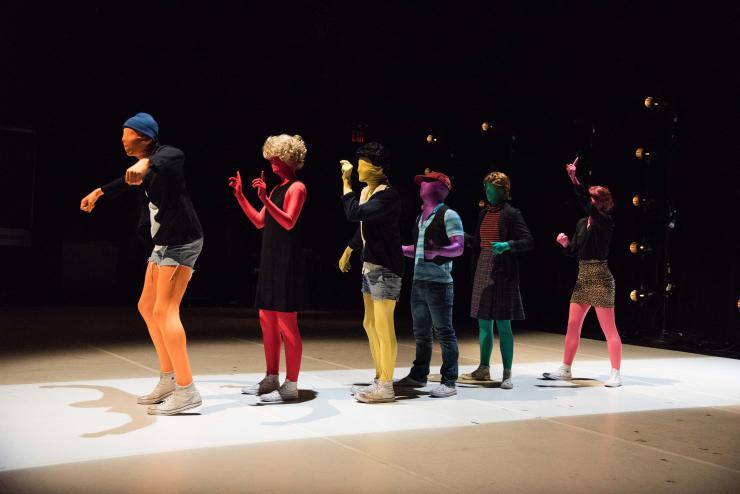
When I fall in love, how do I act? When I break up, what do I say? Andy Warhol, Kelly's hero, knows the answer. “It’s the movies that have really been running things in America ever since they were invented. They tell you what to do, how to do it, when to do it, how to feel about it, and how to look how you feel about it.” During one of my breakups, my partner described the situation as feeling like the breakup in the 2011 film, The Future. But if we hadn’t seen that movie, would the substance of the event been different? Would we have said different words, felt different feelings, since our interaction would have been patterned after another fictional reference point? Kelly pushes William Carlos Williams’s adage, “No ideas but in things” one step further. No ideas but in referent. If my life is stuck in “this,” and I feel compelled to “that,” the unknown, how do I get there? I copy pop.
In one Love Episode vignette, Amy Gernux and Sara Gurevich argue over which '90s film character they most want to “be.” Gernux begins: “If I could choose, I’d be Sarah Michelle Geller in Cruel Intentions. She’s such a boss bitch.” Gurevich reminds her that Geller’s character was also “conniving and manipulative,” and makes a counter-suggestion: “You could be the Stacy Dash to my Alicia Silverstone,” in reference to characters in 1995’s Clueless. “You want me to be Stacy Dash while you are Alicia Silverstone?” Gurney replies in angry disbelief that Gurevich could even suggest she downgrade herself to a supporting role. They attempt to understand themselves through the myopic lens of teen movies from twenty years ago, their choice of roles only as wide as their cultural consumption. I descend the staircase and I’m “that”: either a Cook, a Geller, or a Dash.
Kelly aims to slow this tide of involuntary learning, first by obscuring all six performers in The Feath3r Theory inside spandex suits. The layer of elastic fiber conceals race, age, face, etc., a barrier rejecting the audience’s desire to “see themselves.” For example, when Gernux and Gurevich argue, they argue through a green suit and a pink suit respectively, nullifying the impulse to imprint myself, to pick with whom I “identify.”
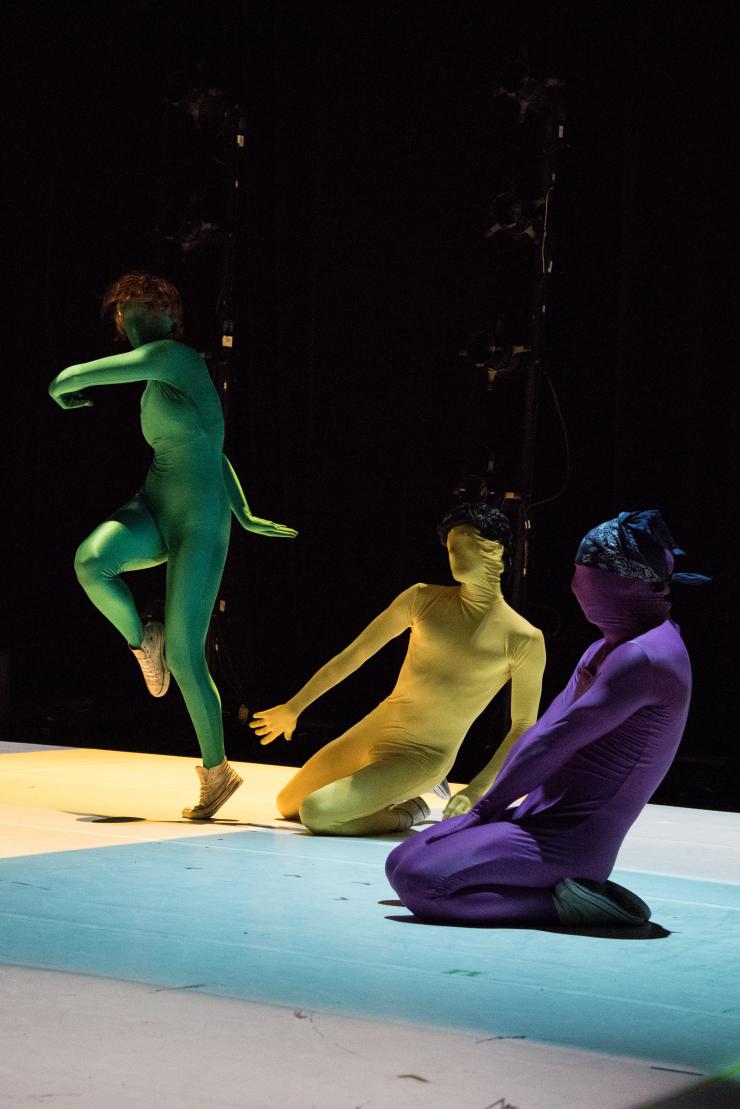
The Love Episode lifts its format from SNL-style sketch comedy with each vignette, monologue, and dance number a part of Kelly cranking his audience through a three- hour teen culture meat grinder. A Kelly makeover isn’t a touchup, a little blush to the cheekbone; it buys out Sephora and empties the truck on your head. In a program note, Lumberyard Dramaturg Melanie George says Kelley’s work can “simultaneously comment, mock, and celebrate a premise within a single scene.” The performance lags when it sticks to celebration. Queer communities have already repurposed some of the mainstream hits The Feath3r Theory deploys, like Taylor Swift’s “Shake It Off” and Carly Rae Jepson’s “Call Me Maybe,” and their inclusion feels more like a mixtape of the company’s favorites than a critique or exploration, escaping without the learning. Recasting a cliché within a new context is what makes it “all that.”
The Love Episode hits high notes when the copy transcends the original, when Kelly uses imitation to drag its hetero subjects into queer forms of behavior, no better or more interesting.
In one vignette, Colin Ranf, masked in purple spandex, goes about his day, miming yoga and talking to his mom on the phone, then plunks himself down for a therapy appointment with red spandex-clad Rachel Pritzlaff. He tells her that he dresses up like a woman for his husband once a week. Since rom coms don’t often model this kind of thing, he asks, “Is that normal? Is that okay?…I just want to look good for him.” He tells Pritzlaff his husband is a lawyer “who also writes songs for Selena Gomez for money,” then launches into a Gomez defense. “People hate Selena Gomez because they think she’s so superficial and girlish and naïve, but…she doesn’t write any of her own songs. My husband does. They’re our real feelings. A gay lawyer from Texas isn’t going to become some gay pop icon and sing songs about how he has his husband dress up in women’s clothes to fulfill his sexual fantasies.”
This switch in authorship recontextualizes the cliché of Gomez’s feminine submissiveness—this is that. Recall how Anna Paquin introduced the makeover of Laney Boggs: “new, not improved, but different.” In Ranf’s version of the Gomez hit, “Good For You,” her normative deferral to a man’s needs becomes an anthem for queer kink acceptance. Ranf says, “Siri, will you play ‘Good For You?’” and he grinds across the floor on his knees, mocking and celebrating, his body wrapped in unimprintable purple, copying the Gomez sex crawl, but for his own reason.
The Love Episode hits high notes when the copy transcends the original, when Kelly uses imitation to drag its hetero subjects into queer forms of behavior, no better or more interesting, culture flattening in its purest Warholian sense.

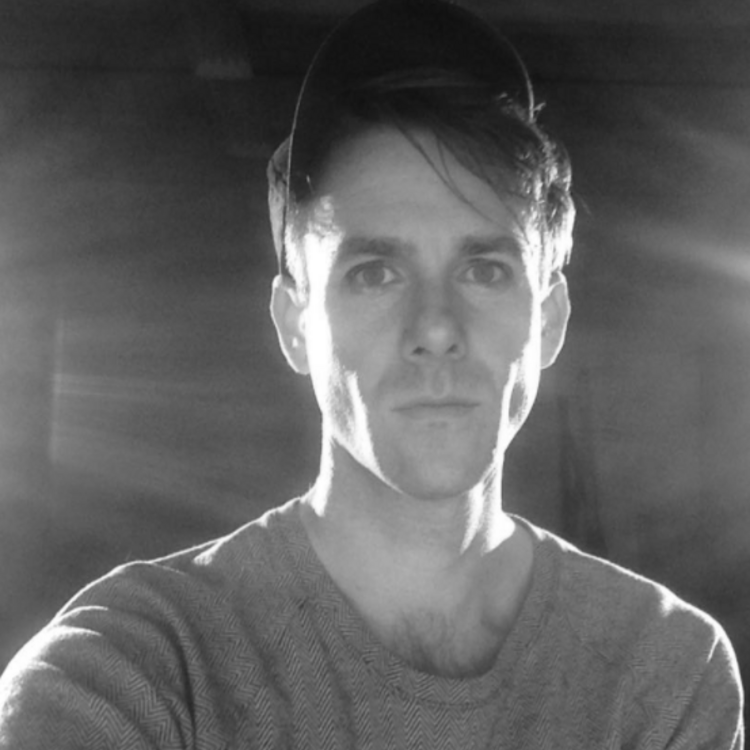


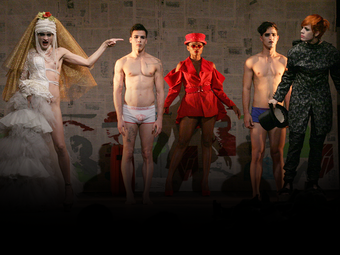

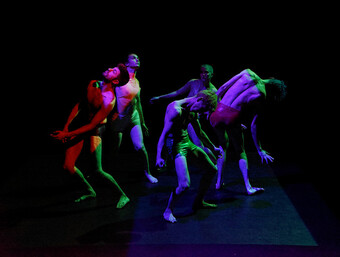


Comments
The article is just the start of the conversation—we want to know what you think about this subject, too! HowlRound is a space for knowledge-sharing, and we welcome spirited, thoughtful, and on-topic dialogue. Find our full comments policy here